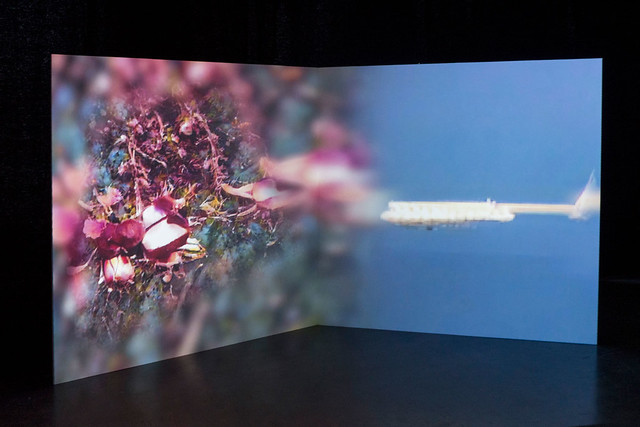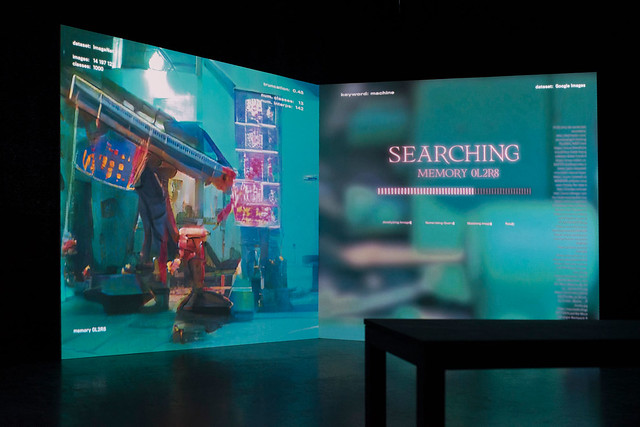AImnesia (2019) Technological development is leading us to convert our minds into bits and to extend the memories, thoughts, and perceptions beyond our biological bodies to algorithmically mediated objects, databases, and networks. The collapsing border between neuroscience and technology has led to the emergence of a new space wherein artificial intelligence (AI) and the human brain can learn from each other. Today, artificial neural networks play an unseen but crucial role in our digital ecosystem by defining and recommending what should be seen, listened to, and read.
The “AImnesia” project focuses on the concept of human hybrid memory, which can be augmented, influenced, and modified by AI. We are beginning to explore a new, technological aspect of our nature by using machine learning algorithms to overcome the boundaries to our understanding of what human consciousness is.
Through the absurd experience of a hybrid memory creation by using a BigGAN model, Ganbreeder app, and reverse Google image search, Chris Kore intends to prompt a discussion of evolving algorithms that can be trained on our online photos and can fill in memory gaps by creating fake memories that are plausible enough to be perceived as real.
“AImnesia” juxtaposes an algorithmic fiction of procedurally recreated machine memories with a discussion with a machine learning researcher and inventor of GANs Ian Goodfellow, futurist and tech-philosopher Gray Scott, professor of cognitive neuroscience Guillen Fernandez, computational neuroscientist Marco Aqil, artist and programmer Gene Kogan, artist and educator Tivon Rice, creative technologist Tomo Kihara, and creator of the generative design tools Joel Simon about the relationship between the human brain and AI, hybrid memories, and the future
of GANs.
What will we remember if our digital memories can be gathered, classified and augmented by AI?
More at www.aimnesia.com



